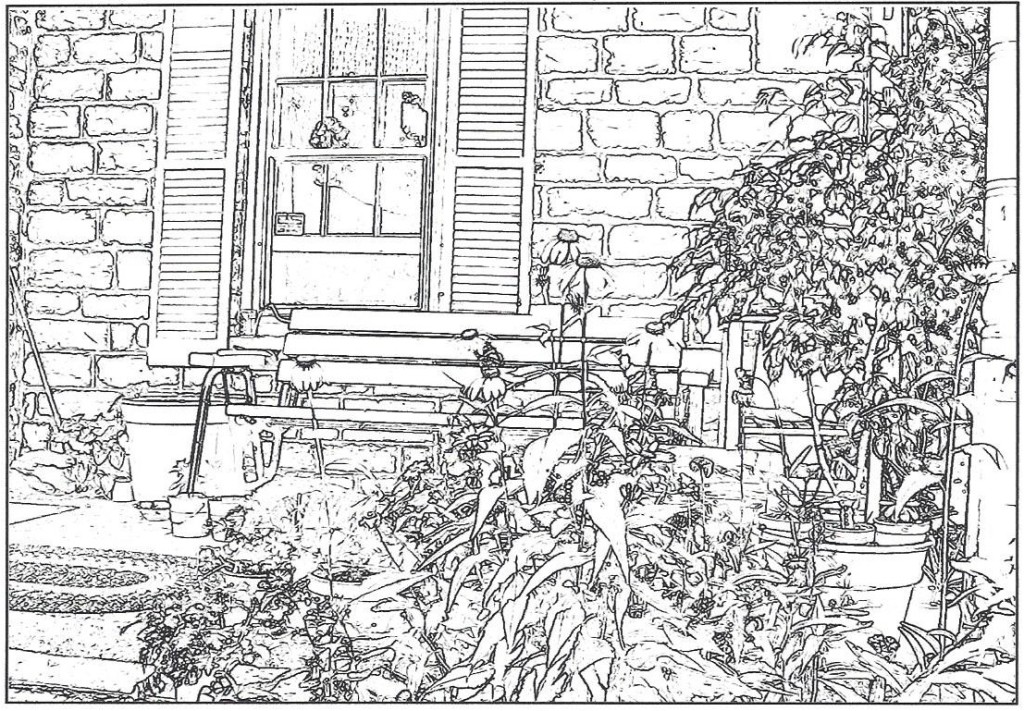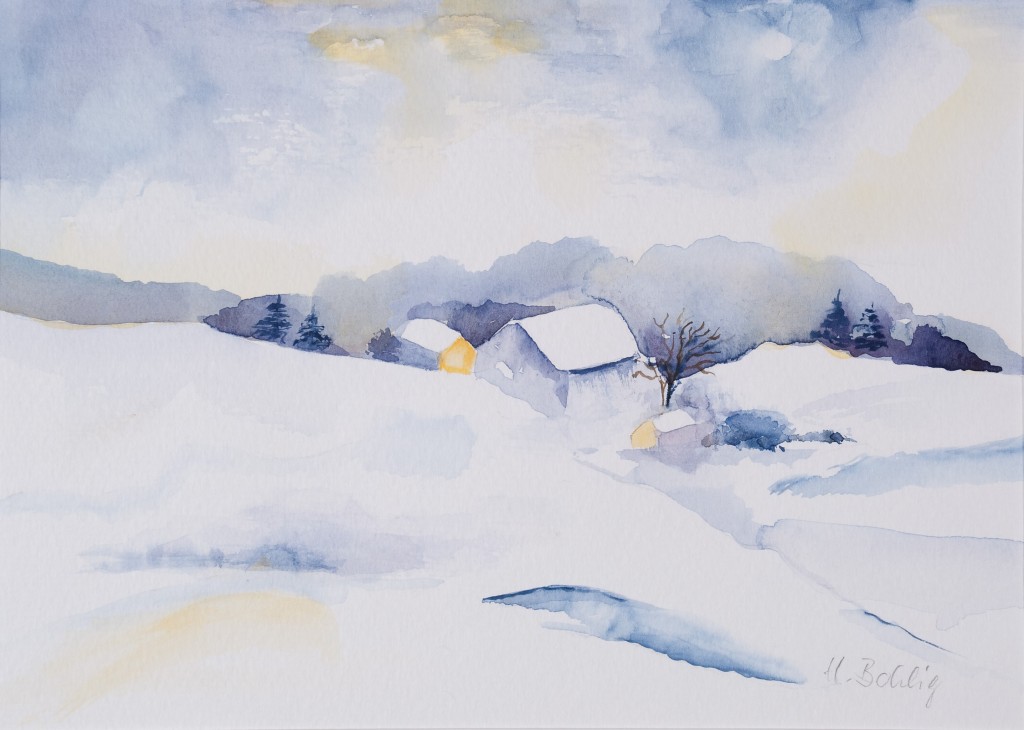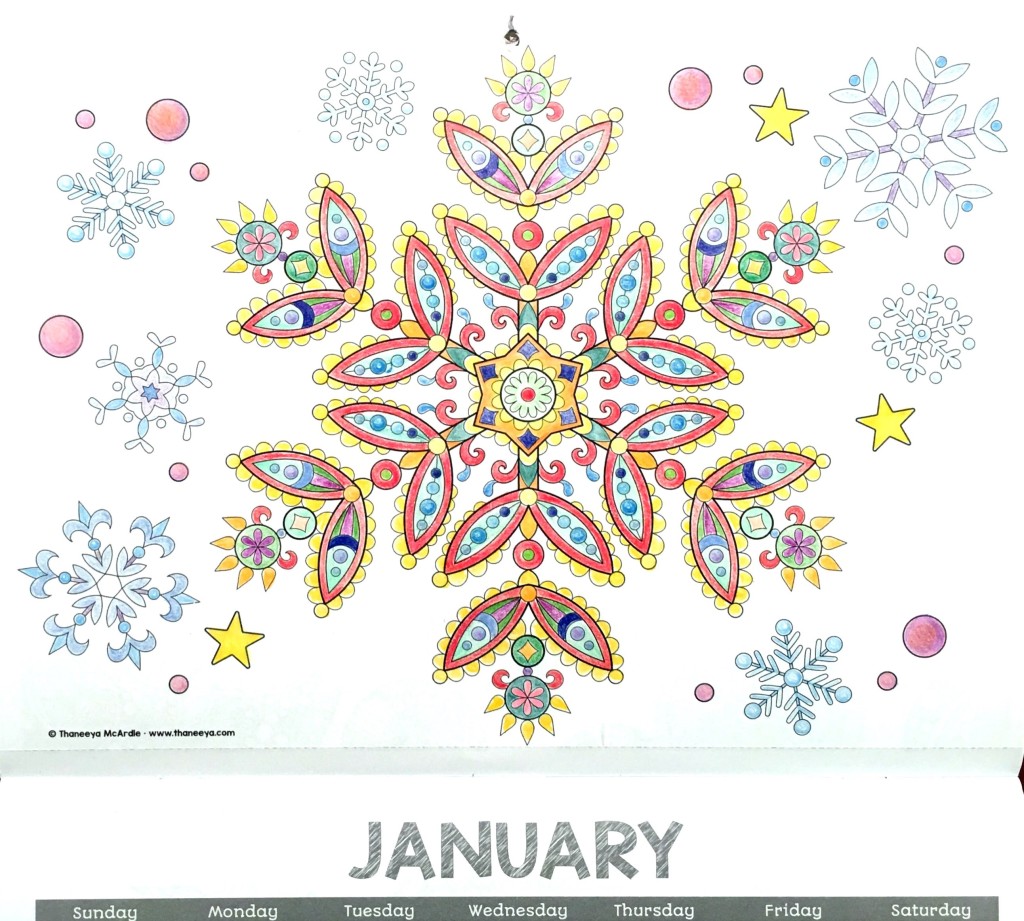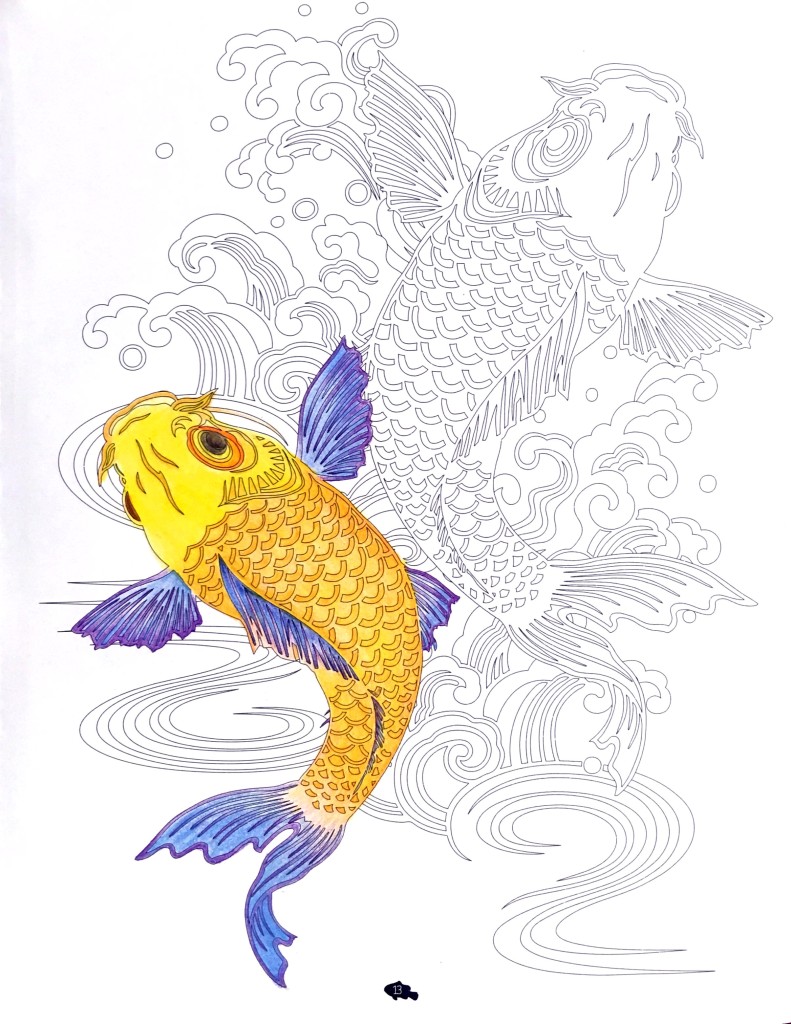I have always loved coloring books, long before they became so popular that bookstores now dedicate entire shelves to them and have special displays all through the store.
Many years ago, when my students studied Verdi’s Aida we used the Ancient Egypt coloring book published by Dover. When we listen to The Song of the Unicorn, we color pages from Life in a Medieval Castle and Village. My beginning students who study the Musical Alphabet get to color the Garden Fairy Alphabet.
One of my favorite features of the Kodak software that came with my camera, a very long time ago, was that I could turn any photograph I had taken into a coloring picture. Many years ago, I took a picture of the front porch of my then-studio and turned it into a coloring picture.
.
Several years ago, when I spoke with my mother about art, and painting, I somewhat sheepishly admitted that I liked coloring books so much that I sometimes sat down and colored a picture I had found or created for a student – this was before the age of coloring books for adults. My mother chuckled and said that she did the same. Before retiring, my mother had started to resume painting and drawing, and after retiring, she dedicated much of her time to traveling, painting, and attending workshops, focusing mostly on watercolors.
As we talked, she mused that what attracted her to coloring books may have been the freedom that comes from not having to create something from scratch. The coloring book already provides the outline – literally -, all you have to do is choose your colors and have at it.
I could immediately relate to that.
I’ve also recently started to think that playing the piano is much like a coloring book: there is the outline – the notes, the printed information in the score – which you can’t (shouldn’t) alter, and then you get to color, staying more or less inside the lines. I’ve also wondered how useful it would be to add a short coloring activity to my meeting with a new student: observe how they handle having to stay in the lines, how creative they can be within certain confines. I always explain to parents of especially young students that so much of what we do in the beginning has to do with learning to follow directions: if the score says E flat, and you play E natural, it will not sound right. If the rhythm consists of quarter and eighth notes, and you play everything as eighth notes, it will not sound right. Yes, music, making music, is a wonderfully creative process, but unless you want to play nothing but your own creations, you need to know how to follow rules. And if you want to learn, you need to be willing and able to follow directions.
In the meantime, I enjoy the many coloring books I have acquired recently, bought at the store, or received as Christmas present from an observant family. I am also a regular at the local arts store where I buy my coloring pencils, one at a time, the exact color I am looking for.
From the 2016 Coloring Calendar, published by DO Magazine:
And, under construction, from the “Enchanted Ocean” coloring book:






